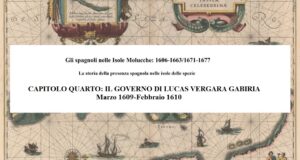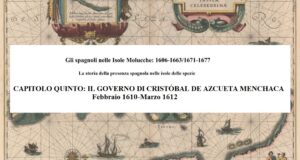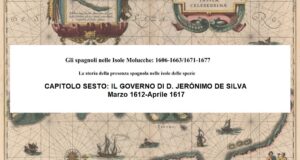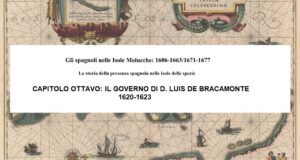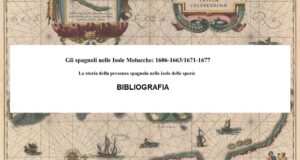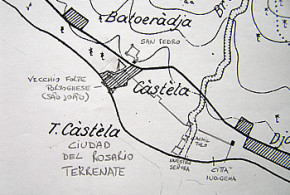Written by Marco Ramerini. English text revision by Dietrich Köster.
The Kingdom of Makassar at the time of Portuguese expansion in the Asian seas comprised the two Kingdoms of Gowa and Tallo. Portuguese merchants frequented Makassar intermittently during the 16th century, but it was only after the Islamization of the Makassar Kingdom (1600s), that their presence grew.
During the 17th century the Portuguese used Makassar as a commercial center for silk, cloves, textiles, sandalwood and diamonds. In the 1620s regularly there were as many as 500 Portuguese merchants, who frequented the port of Makassar. They traded here in safety and the Sultans were fluent in Portuguese and gave aid and comfort to them. The friendly relations between Makassar and Portugal were strenghtened by their common attempts to stop the Dutch power in the Moluccas and Sunda islands.
The prosperity of Makassar greatly increased after the fall of Malacca into Dutch hands (1641), when many Portuguese merchants emigrated to Makassar. In the 1650s the Dominicans founded a church in Makassar. In 1660 there were about 2.000 Portuguese residents in the town. They lived in their own residential area called Portuguese quarter.
In June 1660 a strong Dutch fleet comprising 31 ships and 2.600 men attacked Makassar and stormed the fort of Panakkukang in the port. The main Dutch aim for this attack was to expel the Portuguese from Makassar. A treaty between the Dutch and the Makassars was signed and finally ratified on 2 December 1660. The terms were: The Portuguese should be expelled from Makassar within a year.
The Portuguese departure would have been the complete ruin of the Kingdom. For this reason the Sultan openly attempted to delay their departure. The terms of the treaty were not respected and the Portuguese stayed in Makassar for several years more, but slowly they went to Flores (Larantuka), Solor, Macau, Timor, Siam or Batavia. Finally in 1665 the last Portuguese merchants were forced to leave due to the Dutch pressure.
BIBLIOGRAPHY
– Borges, Maria do Carmo Mira, “Os portugueses e o sultanato de Macassar no século XVII” 269 pp., Tese Mestrado História dos Descobrimentos e da Expansão Portuguesa, Universidade Nova de Lisboa, 1996, Lisbon.
– Jacobs, Hubert “Jesuit Makasar Documents, 1612-1682” XXIII-36*-284 pp. (vol. 134). Monumenta Historica Societatis Iesu, 1988, Rome, Italy.
– Jacobs, Hubert, “The first locally demonstrable Christianity in Celebes 1544”, in: STUDIA N° 17, pp. 251 – 305, 1966, Lisbon, Portugal.
 Colonial Voyage The website dedicated to the Colonial History
Colonial Voyage The website dedicated to the Colonial History






